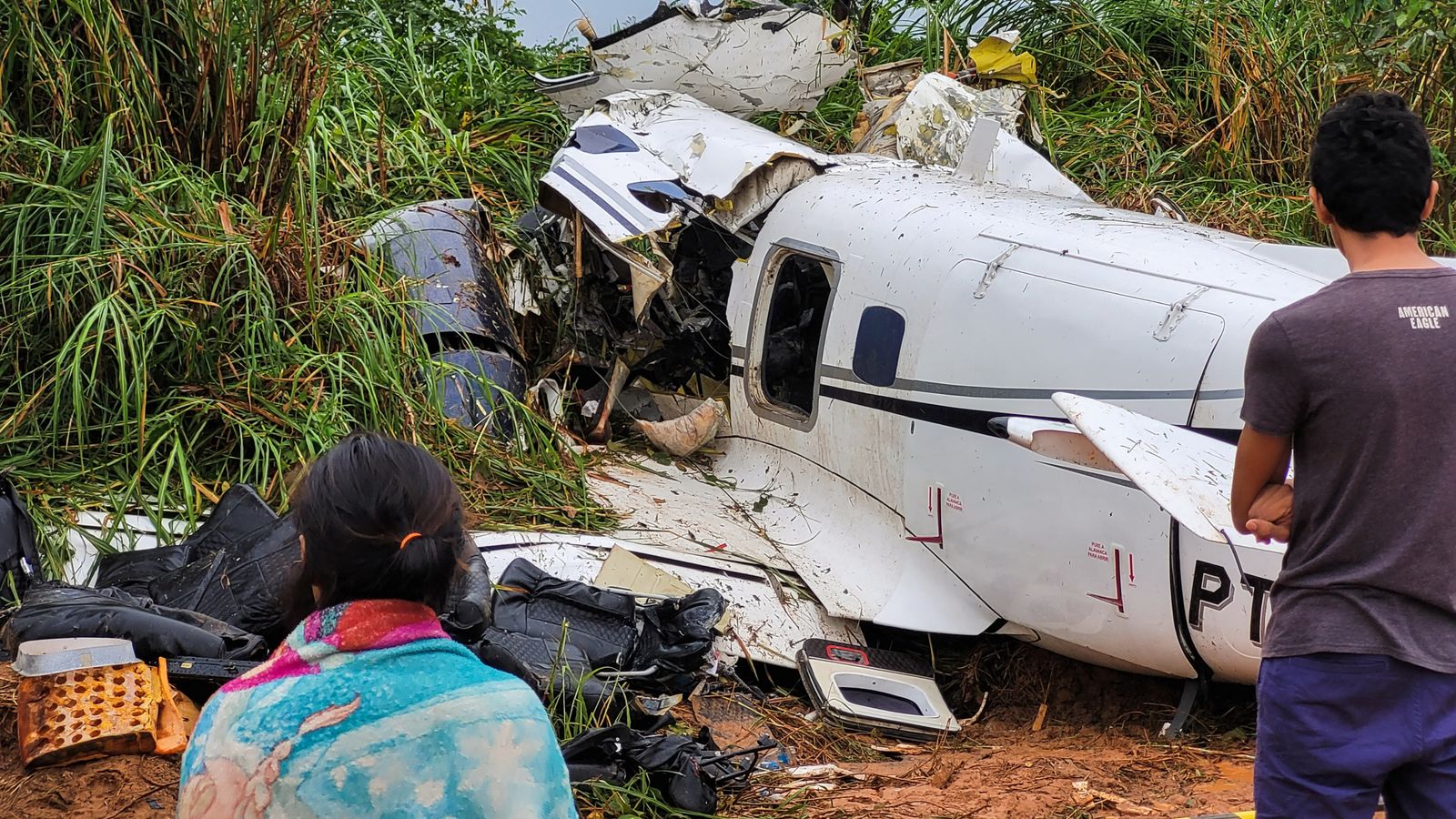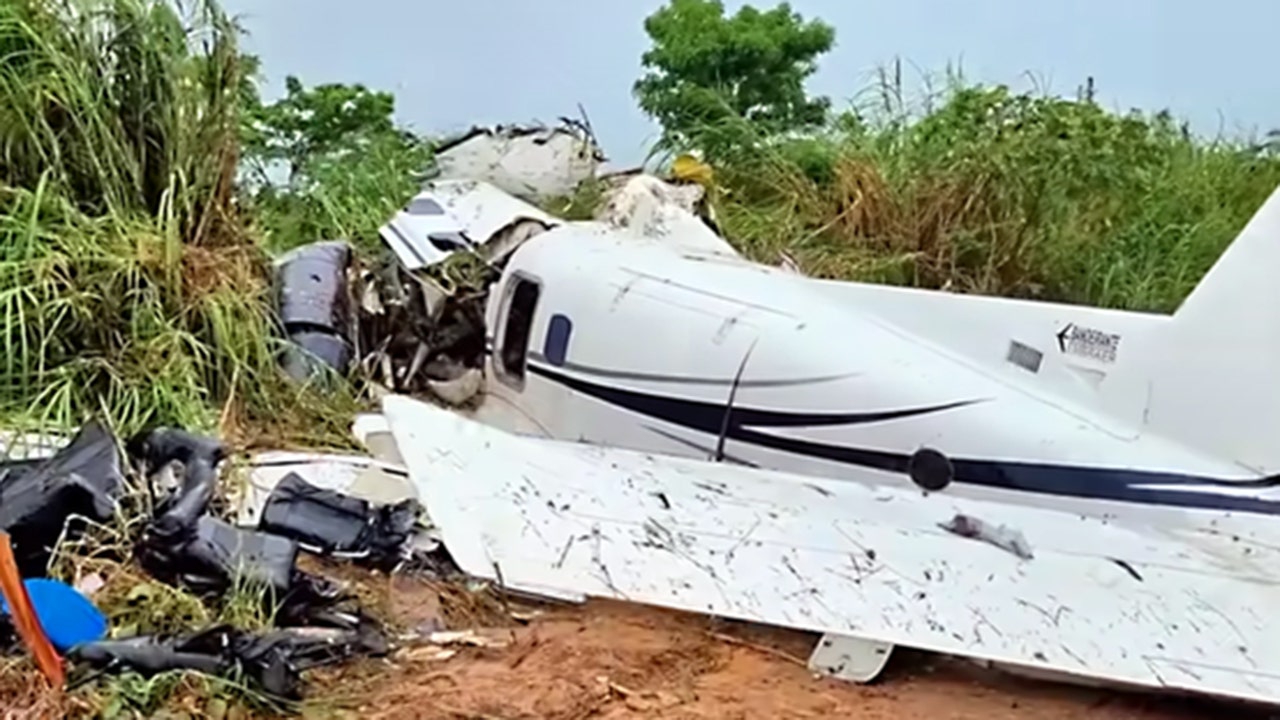Historical Overview of Plane Crashes in Brazil: Plane In Brazil Crash

Brazil’s aviation history is marked by both remarkable progress and tragic accidents. The country’s vast geographical expanse and growing population have always presented challenges for air travel, and throughout its development, Brazil has witnessed a significant number of plane crashes. These incidents have not only resulted in devastating losses of life but have also had a profound impact on the evolution of aviation safety regulations and advancements in the country.
Significant Plane Crashes in Brazil
A timeline of significant plane crashes in Brazil reveals a pattern of both progress and setbacks in aviation safety. These incidents, while tragic, have served as catalysts for crucial reforms and advancements in the industry.
- 1946: Cruzeiro do Sul Flight 542 Crash: This accident, which occurred near the city of Natal, resulted in the loss of 22 lives and highlighted the need for improved air navigation and communication systems. This event prompted the establishment of the Brazilian Civil Aviation Agency (ANAC) in 1947, which was tasked with regulating and overseeing the country’s aviation sector.
- 1958: Varig Flight 825 Crash: This crash, which occurred near Rio de Janeiro, claimed the lives of 38 people and led to stricter regulations regarding aircraft maintenance and pilot training. It also emphasized the importance of establishing a robust aviation safety culture within the country.
- 1973: Transbrasil Flight 402 Crash: This accident, which occurred near São Paulo, resulted in the deaths of 135 people and raised concerns about air traffic control procedures and the need for more effective emergency response systems. This incident prompted a review of air traffic management systems and the introduction of new technologies to enhance safety.
- 1982: Varig Flight 837 Crash: This crash, which occurred in the Amazon rainforest, claimed the lives of 127 people and exposed the vulnerabilities of flying in remote areas. It led to improvements in navigation and communication systems for flights operating in challenging terrain and weather conditions.
- 2006: TAM Airlines Flight 3054 Crash: This accident, which occurred at São Paulo’s Congonhas Airport, resulted in the deaths of 199 people and highlighted the importance of runway safety and the need for improved airport infrastructure. This incident led to a comprehensive review of airport safety standards and the implementation of new technologies to prevent similar accidents.
Evolution of Air Travel in Brazil
The evolution of air travel in Brazil has been marked by significant growth, driven by factors such as the country’s vast geographical expanse, increasing urbanization, and the rise of tourism. However, this growth has also presented challenges in terms of infrastructure development, aviation safety regulations, and the need to address the demands of a rapidly expanding passenger base.
- Early Years: The early years of air travel in Brazil were characterized by small, regional airlines operating with limited infrastructure and safety standards. The first commercial flight in Brazil took place in 1927, and the country’s first major airline, Varig, was founded in 1927. The development of air travel in Brazil was initially driven by the need to connect remote areas and facilitate the transportation of goods and people.
- Post-World War II Growth: Following World War II, Brazil experienced a period of rapid economic growth, which fueled the expansion of air travel. The country’s major airlines, such as Varig and Transbrasil, grew significantly, and the development of new airports and air routes made air travel more accessible to the general population.
- Deregulation and Competition: In the 1990s, the Brazilian government deregulated the aviation sector, which led to increased competition among airlines and the emergence of new low-cost carriers. This deregulation resulted in lower airfares and increased passenger numbers, but it also raised concerns about the safety standards of some airlines.
- Recent Developments: In recent years, Brazil has made significant investments in its aviation infrastructure, including the construction of new airports and the modernization of existing facilities. The country has also implemented stricter safety regulations and improved its air traffic control systems. These developments have contributed to a significant increase in air travel and have made Brazil a major player in the global aviation industry.
Causes and Contributing Factors of Plane Crashes

Plane crashes in Brazil, like in any other part of the world, are complex events often caused by a combination of factors. Understanding these contributing factors is crucial for improving aviation safety and preventing future tragedies.
Pilot Error
Pilot error is a significant factor in many plane crashes globally, and Brazil is no exception. Pilot fatigue, lack of training, improper decision-making, and miscommunication can all lead to accidents. For instance, a 2017 study by the Brazilian National Civil Aviation Agency (ANAC) found that pilot error was a contributing factor in 30% of all aviation accidents in Brazil.
Mechanical Failure
Mechanical failures, including engine malfunctions, structural defects, and faulty equipment, can also contribute to plane crashes. These failures can result from inadequate maintenance, poor design, or even manufacturing defects. A notable example is the 2006 TAM Airlines Flight 3054 crash in São Paulo, which was attributed to a combination of pilot error and a malfunctioning brake system.
Weather Conditions
Weather conditions, such as thunderstorms, heavy rain, fog, and strong winds, can pose significant challenges to pilots and contribute to crashes. Adverse weather can affect visibility, reduce aircraft performance, and increase the risk of turbulence. For instance, in 2014, a small aircraft crashed in the Amazon rainforest due to heavy rainfall and low visibility.
Air Traffic Control and Infrastructure, Plane in brazil crash
Air traffic control and infrastructure play a crucial role in ensuring the safe flow of air traffic. Inadequate air traffic control systems, limited radar coverage, and insufficient airport infrastructure can contribute to accidents. In 2019, a collision between two aircraft at Congonhas Airport in São Paulo was attributed to a combination of air traffic control errors and inadequate airport infrastructure.
Comparison with Other Countries
Brazil’s aviation safety record has improved significantly in recent years, but the country still faces challenges. Compared to developed countries like the United States and Europe, Brazil has a higher rate of aviation accidents. However, it is important to note that Brazil has a vast and diverse airspace, with many small and regional airlines operating in remote areas.
Impact and Response to Plane Crashes

Plane crashes in Brazil have devastating consequences that extend far beyond the immediate loss of life. The impact ripples through families, communities, and the aviation industry, leaving behind a trail of grief, trauma, and a relentless pursuit of safety improvements.
Immediate and Long-Term Consequences
Plane crashes in Brazil, like in any other part of the world, have immediate and long-term consequences for victims, families, and the aviation industry. The immediate impact is often the most devastating, involving loss of life, injuries, and the destruction of property. The aftermath brings about a wave of grief, trauma, and a sense of shock and disbelief. Families grapple with the loss of loved ones, while survivors struggle to cope with physical and psychological injuries.
- Loss of Life and Injuries: Plane crashes result in the tragic loss of life and severe injuries. The immediate impact on families is immense, leaving them shattered and grappling with the pain of losing loved ones. Survivors often suffer from physical and psychological injuries, requiring extensive medical care and long-term support.
- Psychological Trauma: Plane crashes leave a lasting psychological impact on survivors, families, and communities. Survivors often experience post-traumatic stress disorder (PTSD), anxiety, and depression. Families struggle to cope with the loss of loved ones and the emotional trauma of the event.
- Economic Impact: Plane crashes have significant economic consequences, impacting families, businesses, and the aviation industry. Families face financial burdens associated with funeral expenses, medical bills, and lost income. Businesses may suffer losses due to disruptions in operations and the loss of employees.
- Impact on the Aviation Industry: Plane crashes can significantly impact the aviation industry, leading to decreased passenger confidence, reputational damage, and increased safety regulations. Airlines may face financial losses due to cancellations, investigations, and legal claims.
Response of the Brazilian Government and Aviation Authorities
The Brazilian government and aviation authorities play a crucial role in responding to plane crashes, ensuring accountability, and implementing safety measures. These responses are multifaceted, encompassing investigations, safety improvements, and support for victims and their families.
- Investigations: Following a plane crash, the Brazilian government and aviation authorities launch thorough investigations to determine the cause of the accident. These investigations typically involve examining the aircraft, the flight data recorder (FDR), the cockpit voice recorder (CVR), and interviewing witnesses. The findings of these investigations are crucial for identifying safety issues and implementing preventative measures.
- Safety Improvements: The Brazilian government and aviation authorities implement safety improvements based on the findings of investigations. These improvements may include new regulations, training programs, and technological advancements. The goal is to prevent similar accidents from happening in the future.
- Support for Victims and Families: The Brazilian government and aviation authorities provide support to victims and their families in the aftermath of a plane crash. This support may include financial assistance, counseling services, and legal aid. The government also works to ensure that victims and their families receive appropriate compensation for their losses.
Public Perception of Air Travel Safety in Brazil
Public perception of air travel safety in Brazil is influenced by a complex interplay of factors, including the frequency of plane crashes, the effectiveness of safety regulations, and the media’s portrayal of aviation incidents. Plane crashes can significantly impact public trust in the aviation industry, leading to a decline in air travel demand.
- Media Coverage: The media plays a significant role in shaping public perception of air travel safety. Extensive media coverage of plane crashes can heighten public anxiety and create a sense of fear among potential travelers. However, responsible media coverage can also raise awareness about safety issues and encourage improvements in the aviation industry.
- Government Transparency: Public trust in air travel safety is also influenced by the government’s transparency in investigating plane crashes and implementing safety measures. Open and honest communication with the public about the causes of accidents and the steps taken to prevent future incidents can help to restore confidence in the aviation industry.
- Safety Measures: The effectiveness of safety measures implemented by the Brazilian government and aviation authorities is crucial in maintaining public trust in air travel. Stringent regulations, rigorous inspections, and advanced safety technologies can contribute to a safer aviation environment and increase public confidence in air travel.
Plane in brazil crash – The recent plane crash in Brazil has shaken the nation, raising questions about safety protocols and air travel regulations. While investigations continue, it’s important to remember that such tragedies can have far-reaching consequences, even influencing discussions about important issues like who will moderate the next presidential debate.
The focus on safety and accountability, often heightened after such events, can impact the selection of moderators and the overall tone of the debate.
The recent plane crash in Brazil has understandably captured global attention, highlighting the importance of aviation safety. While the investigation into the cause continues, it’s also a reminder that tragedies like this can happen anywhere. Meanwhile, across the world, the abc presidential debate time is also drawing attention, as candidates address crucial issues that impact the lives of millions.
The contrasting events, though seemingly disparate, serve as a potent reminder of the complex and interconnected nature of our world.
